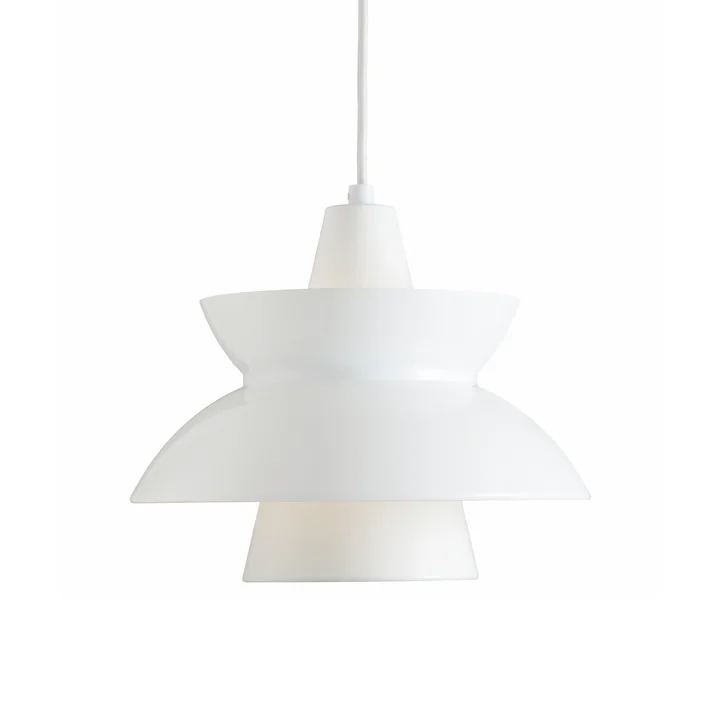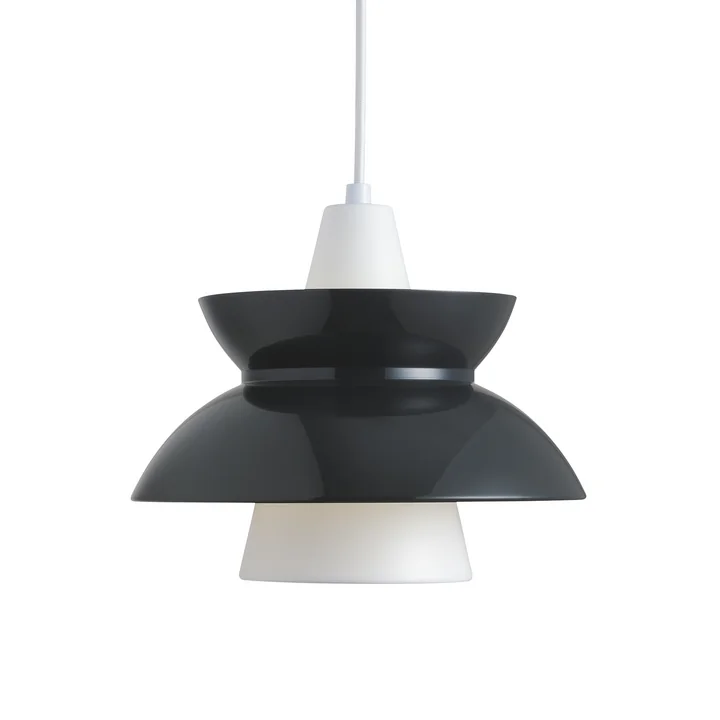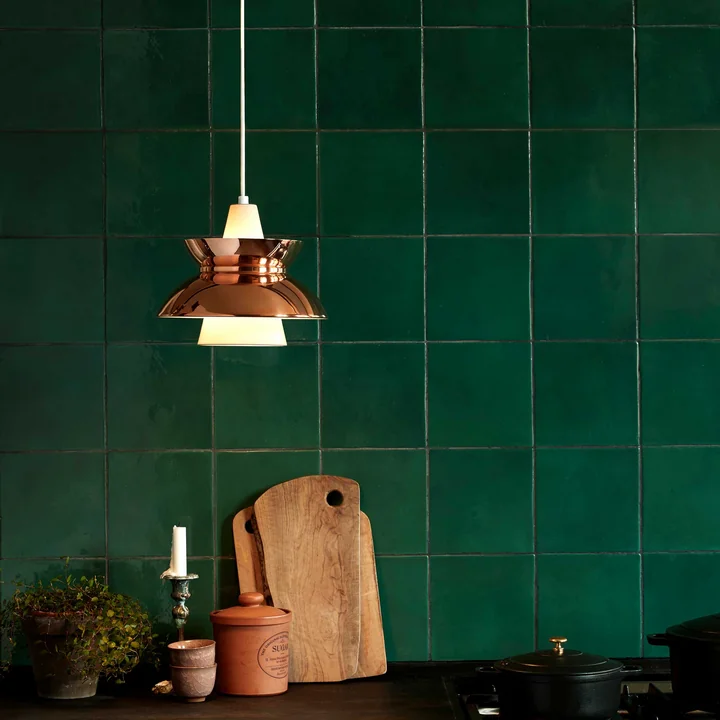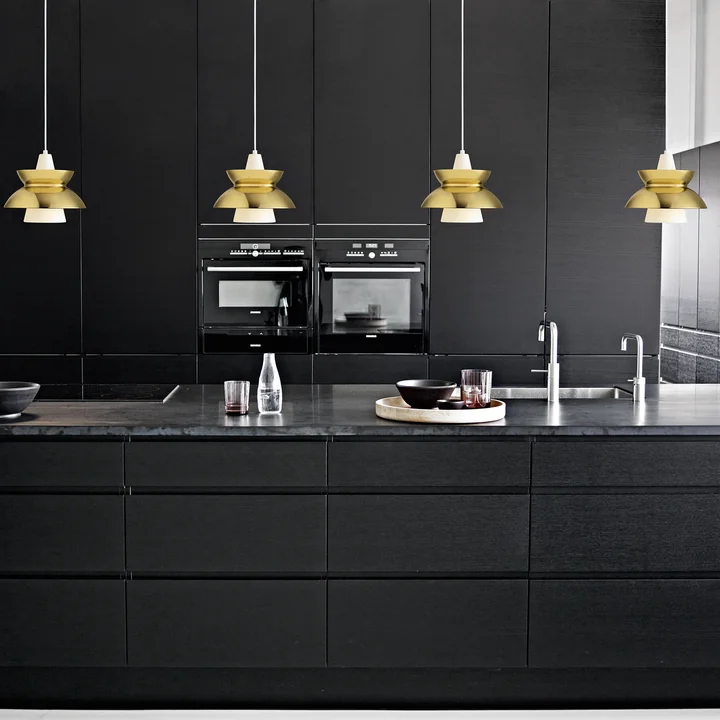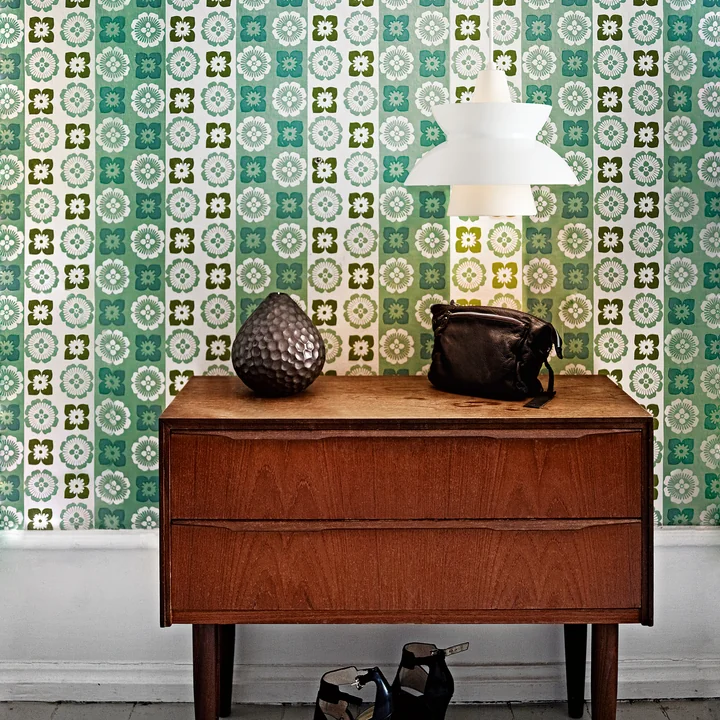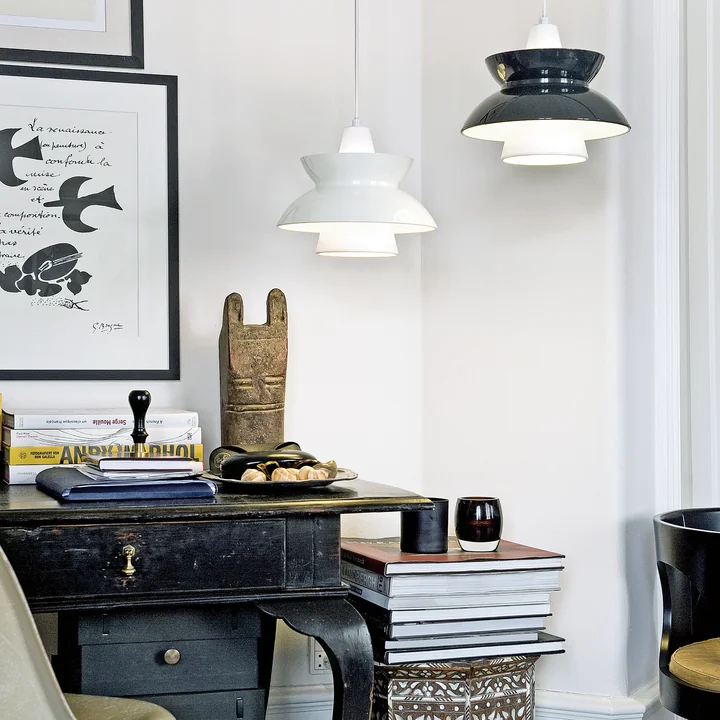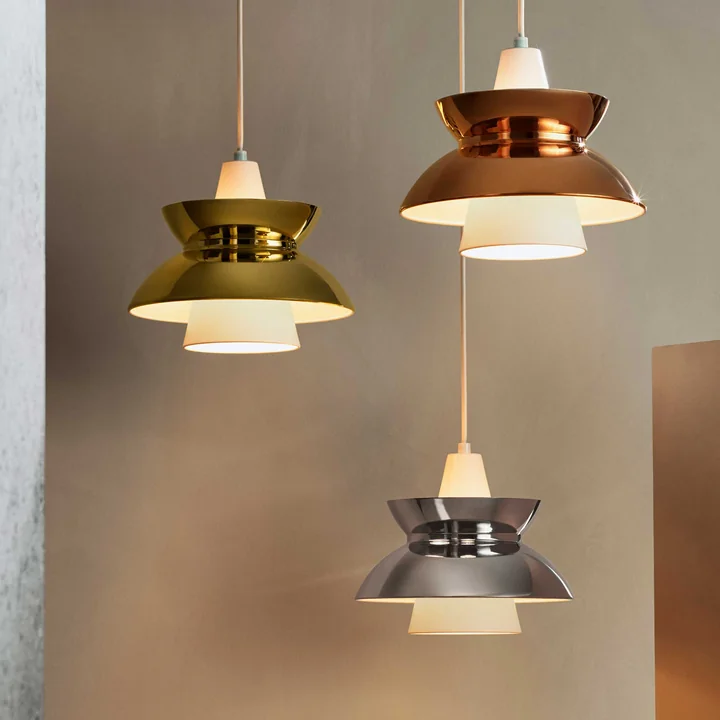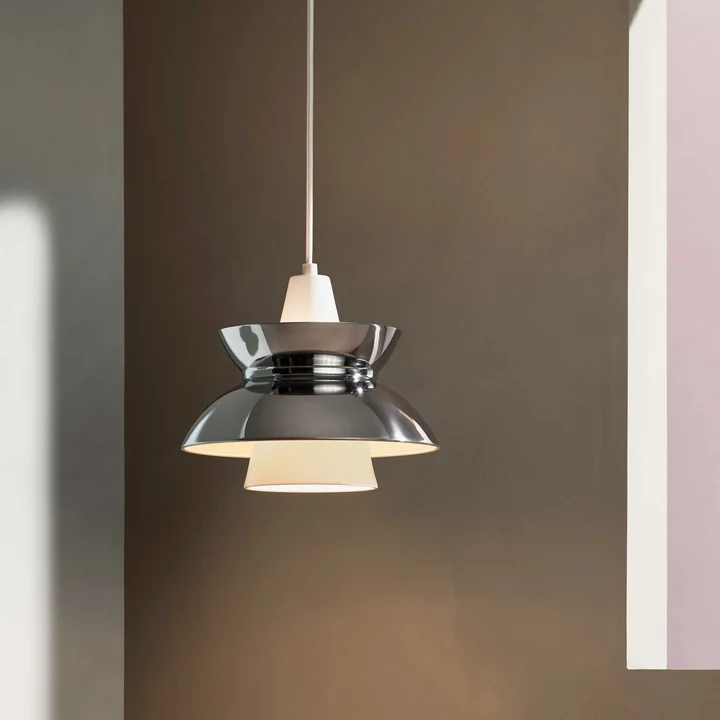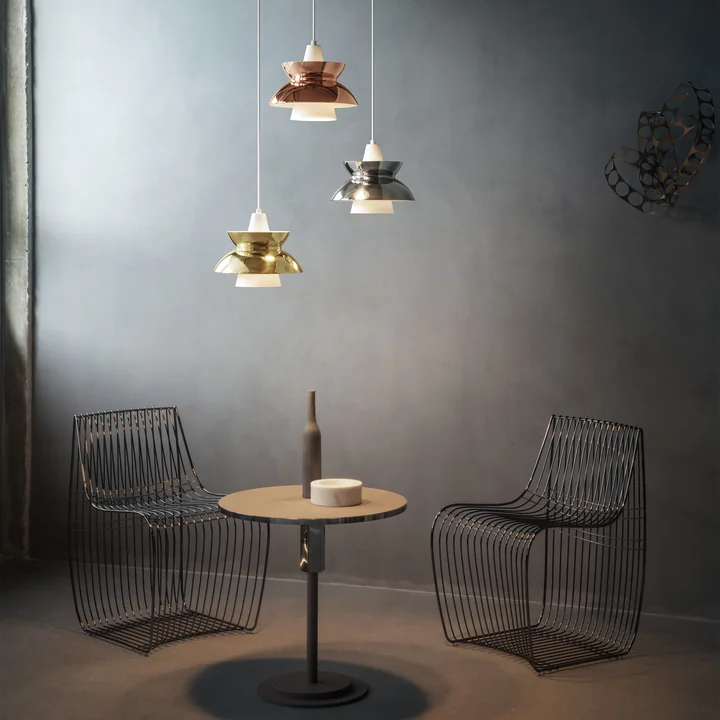Pendant light of the Danish Navy
The Doo Wop pendant lamp by Poul Henningsen has been a true classic since the 1950s. It has been designed in close cooperation between Søværnets Bygningsdistrikt (the Danish Navy's buildings administration) and Louis Poulsen. For decades the doo wop was used for various purposes in the buildings of the Danish Navy, for example in canteens and offices.
The "marine pendant luminaire", as it was called, was widely used because of its excellent light properties and applicability. It was not until the beginning of the 1980s that she disappeared from Louis Poulsen's catalogue.
In recent years, more and more of the older versions have been sold through antique shops and auctions. Thus, a demand has again arisen, with the request to resume production.
New edition in current colours
The new version remains extremely faithful to the previous one. However, the colours have been updated to reflect the trend of the times, while the manufacturing processes have remained the same. The umbrellas are turned by hand and finished with the slight curvature, which gives the umbrella a special optical volume.
Doo Wop is an unobtrusive and simple pendant luminaire that can be used in many ways due to its medium size and light emission. It is harmonious in design and looks just as good when hung alone as it does when arranged in rows or bundles.
Doo Wop creates atmosphere in the living room, dining room, kitchen, home office, children's room, entrance area, stairs, bedroom - in short, it provides a fresh breeze and good lighting in all living areas.
Two reflectors for glare-free, pleasant light
In principle, the doo wop has two reflectors - the inner conical one, which provides glare-free light downwards, and the outer one, which creates soft lighting up/down. The outer shade in particular helps to create a pleasant and atmospheric atmosphere in the vicinity of the pendant luminaire.
The doo-wop is available in different versions. All versions are equipped with an E27 socket. The design of the luminaire allows the use of different light sources without compromising the quality of the light, although it is recommended not to use light sources with a colour index below 85, which would reduce colour rendering and the atmosphere in the room.
